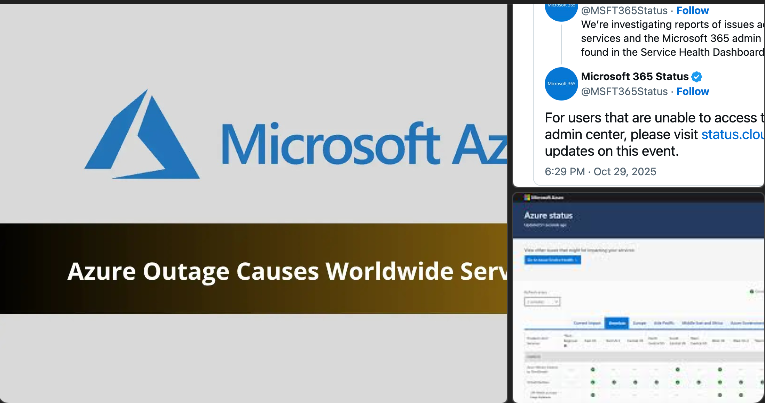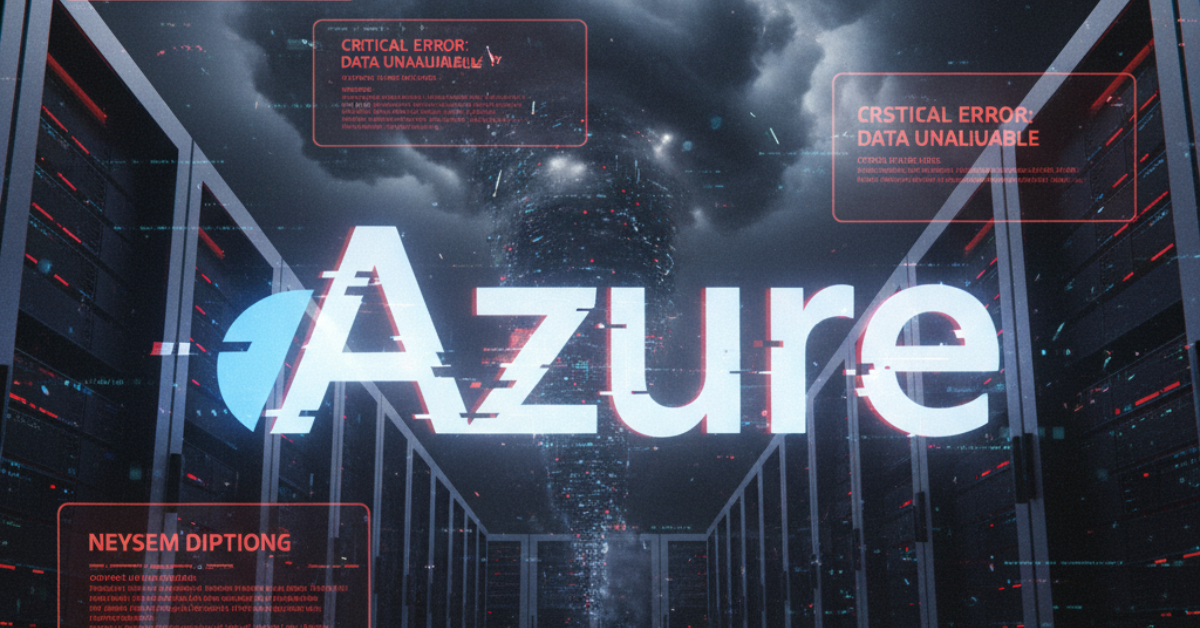On October 29, 2025, Microsoft reported an outage affecting its Azure cloud platform and associated services (such as Microsoft 365, Minecraft, Xbox Live).
According to outage-tracking site Downdetector, peak reports reached over 18,000 for Azure and nearly 11,700 for Microsoft 365 services.
The root cause? Microsoft pointed to a mis-configured internal change affecting its content-delivery/infrastructure network layer (specifically a portion of the Azure network).

2. Why It Matters
- Azure is globally widespread: many businesses, governments, apps and services rely on it as foundational infrastructure. An outage here ripples far.
- Because the issue was infrastructure-wide (not just a single data-centre), it exposed how a single configuration error can impact many downstream services.
- In an era of “always-on” business and digital services, any cloud interruption can lead to lost revenue, degraded service, and brand damage.
3. What Went Wrong (Technical View)
- The incident appears tied to Azure Front Door (AFD) infrastructure — a network, content-delivery & global load-balancing service in Azure. Updates or routing changes in AFD caused cascading access issues.
- Some reports cite DNS issues as contributing factor — meaning domain-name resolution or routing became inconsistent, hindering access.
- In prior Azure incidents, causes have included resource-capacity spikes, mis- configuration of clusters, unhealthy nodes, etc.
4. Impact on Users & Businesses
- For end-users: inability to access Microsoft services like Office 365, admin portals, or Xbox/Minecraft platforms. Yahoo+1
- For businesses: potential interruptions in critical operations, loss of productivity, delayed projects, customer dissatisfied.
- For cloud infrastructure: trust and expectations are challenged — customers expect resilience and redundancy.
5. Lessons & Take-aways
- Redundancy isn’t just hardware, it’s architecture. Even a single configuration change in a globally distributed service (like AFD) can trigger widespread issues.
- Monitoring and rollback capabilities are vital. Quick detection and the ability to revert changes reduce impact.
- Communications matter. Users want clear status updates; delayed or opaque messaging erodes trust.
- Cloud dependence means shared risk. Even if your app is “just” one layer above Azure, you’re still exposed to Azure’s infrastructure events.
- Prepare for the unexpected. Outages will happen — having incident playbooks, fallback plans, and communications ready matters.
6. What Users & Businesses Should Do
- Monitor the status page for Azure services regularly and subscribe to alerts.
- Architect for fail-over and multi-region deployment where mission-critical systems exist.
- Maintain a communication plan for customers and users during outages to minimise frustration.
- After an incident: perform a post-mortem, identify how the outage impacted you, and update your resilience plan accordingly.
7. Final Thoughts
The October 2025 Azure outage is a timely reminder that even the largest, most sophisticated cloud platforms are vulnerable to internal changes, mis-configuration or networking issues. For organisations relying on cloud services, this event underlines the importance of resilience, preparedness, and clear communication. The cloud isn’t magic — it’s complex infrastructure that still needs careful design and oversight.
-
How Jemimah Rodrigues Became India’s Most Promising Young Cricketer
Jemimah Rodrigues ✅ Final Thoughts Jemimah Rodrigues is more than just a talented cricketer—she is a symbol of India’s rising … Read more
-
Nithin Kamath: The Visionary Behind Zerodha’s Billion-Dollar Success
Discover how Nithin Kamath built Zerodha into India’s largest brokerage without external investors. Learn about his journey, success lessons, net … Read more
-
Google Pixel 10 Pro: The Smartest AI-Powered Phone of 2025
Discover everything about the Google Pixel 10 Pro — AI features, powerful camera, price, and why this phone is redefining … Read more















